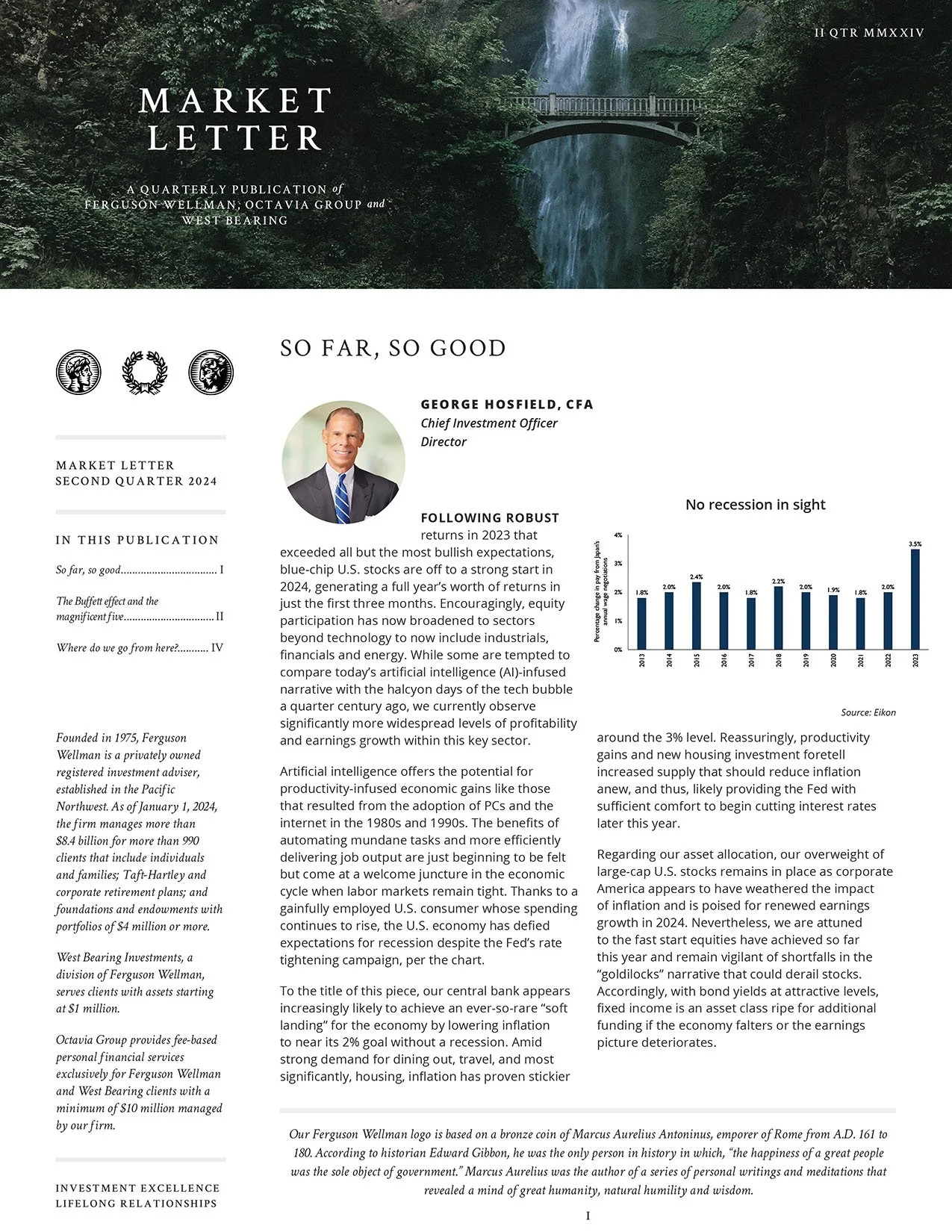In our most recent Market Letter publication, George Hosfield, CFA, provided an update to our investment strategy. There he discussed the Fed’s progress in fighting inflation and delivering a soft economic landing, plus an update on the dominant theme of artificial intelligence across the equity markets.
by George Hosfield, CFA
Chief Investment Officer
Director
SO FAR, SO GOOD
Following robust returns in 2023 that exceeded all but the most bullish expectations, blue-chip U.S. stocks are off to a strong start in 2024, generating a full year’s worth of returns in just the first three months. Encouragingly, equity participation has now broadened to sectors beyond technology to include industrials, financials and energy. While some are tempted to compare today’s artificial intelligence (AI)-infused narrative with the halcyon days of the tech bubble a quarter century ago, we currently observe more widespread levels of profitability and earnings growth within this key sector.
Artificial Intelligence offers the potential for productivity-infused economic gains like those that resulted from the adoption of PCs and the internet in the 1980s and 1990s. The benefits of automating mundane tasks and more efficiently delivering job output are just beginning to be felt but come at a welcome juncture in the economic cycle when labor markets remain tight. Thanks to a gainfully employed U.S. consumer whose spending continues to rise, the U.S. economy has defied expectations for recession despite the Fed’s rate tightening campaign, per the chart below.
To the title of this piece, our central bank appears increasingly likely to achieve an ever-so-rare “soft landing” for the economy by lowering inflation to its 2% goal without a recession. Amid strong demand for dining out, travel, and most significantly, housing, inflation has proven stickier around the 3% level. Reassuringly, productivity gains and new housing investment foretell increased supply that should reduce inflation anew, and thus, likely providing the Fed with sufficient comfort to begin cutting interest rates later this year.
Regarding our asset allocation, our overweight of large-cap U.S. stocks remains in place as corporate America appears to have weathered the impact of inflation and is poised for renewed earnings growth in 2024. Nevertheless, we are attuned to the fast start equities have achieved so far this year and remain vigilant of shortfalls in the “goldilocks” narrative that could derail stocks. Accordingly, with bond yields at attractive levels, fixed income is an asset class ripe for additional funding if the economy falters or the earnings picture deteriorates.
To read the entire publication, click the button below.



